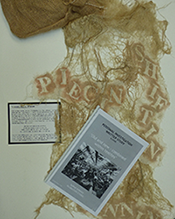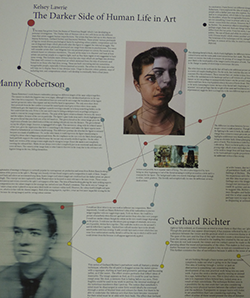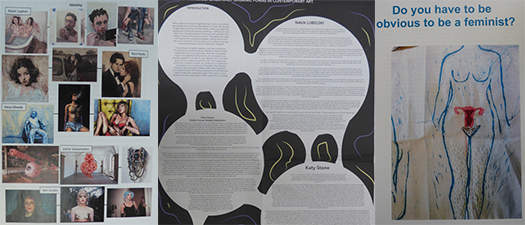A Level Art and Design – teacher and moderator tips for delivering the related study
17 November 2019
One area that I’m getting lots of questions about recently is the Related Study element of the Personal Investigation. Therefore we've decided to republish this helpful post which was originally posted on 30 November 2017. The blog provides some great tips for delivering a successful Related Study which are all still very relevant today.
We’ve asked our lead moderator and an experienced teacher to give you their top tips for delivering a successful related study. This new element to the reformed qualification has been the subject of many queries and discussions so to help we’ve also included some examples of student work to help inform and inspire your students.
Key Advice – John Nickson
John is our lead moderator for A Level Art and offers some straightforward guidance of studying/teaching the related study
Research thoroughly:
- Evaluate and interpret research findings

- Structure the related study
Write clearly and coherently
- Use subject-specific vocabulary
- Make it related
- Understand cultural context
- Critically analyse artworks
Approaches
There are many different approaches that students can use to producing their related study including:
- Illustrated essay (handwritten or word docs)

- Book or journal
- Information panels
- Timeline or sequence of events
- Diary of visits or exhibitions
- PowerPoint
- Blog
- Interactive
- Moving image and/or sound
Requirements
- The related study should consist of a guided minimum of 1000 words of extended written response.
- Learners are required to establish through this written and, where appropriate, illustrated component, the related context in which their chosen practical portfolio exists.
- This may be established by exploring the genre, subject matter, movement or historical framework of the overarching starting point, course of study or theme selected.

Last words – Russell Maggs
- Consider a discursive question for written related studies. It can help the student to engage critically with facts and other sources in a more focused manner within their chosen context.
- In order to establish the broader context of the theme the students could identify key historical events and art movements relevant to their intention.
- Some students use subheadings and signposting throughout their written related study. Signposting is a device used to guide the reader through your related study. Signposting can be used to reinforce the structure of your study and could make it more coherent.
- The presentation of your related study could employ a magazine style format where the use of specialist language and visuals are combined to produce a succinct and relevant outcome.
Want to share your thoughts or ideas about the new Related Study element? Follow us @OCR_ArtDesign or contact us at art&design@ocr.org.uk. You can also sign up for email updates for Art and Design and other OCR subjects.
About the author
 Rebecca Wood - Subject Advisor
Rebecca Wood - Subject Advisor
Before joining OCR, Rebecca taught in post-16 education for 17 years. She also worked as an examiner and moderator across a range of creative subjects. Rebecca has also run workshops for young people as far afield as Brazil and Russia. In her spare time she enjoys travelling, spending time with her two sons and walking her dog.